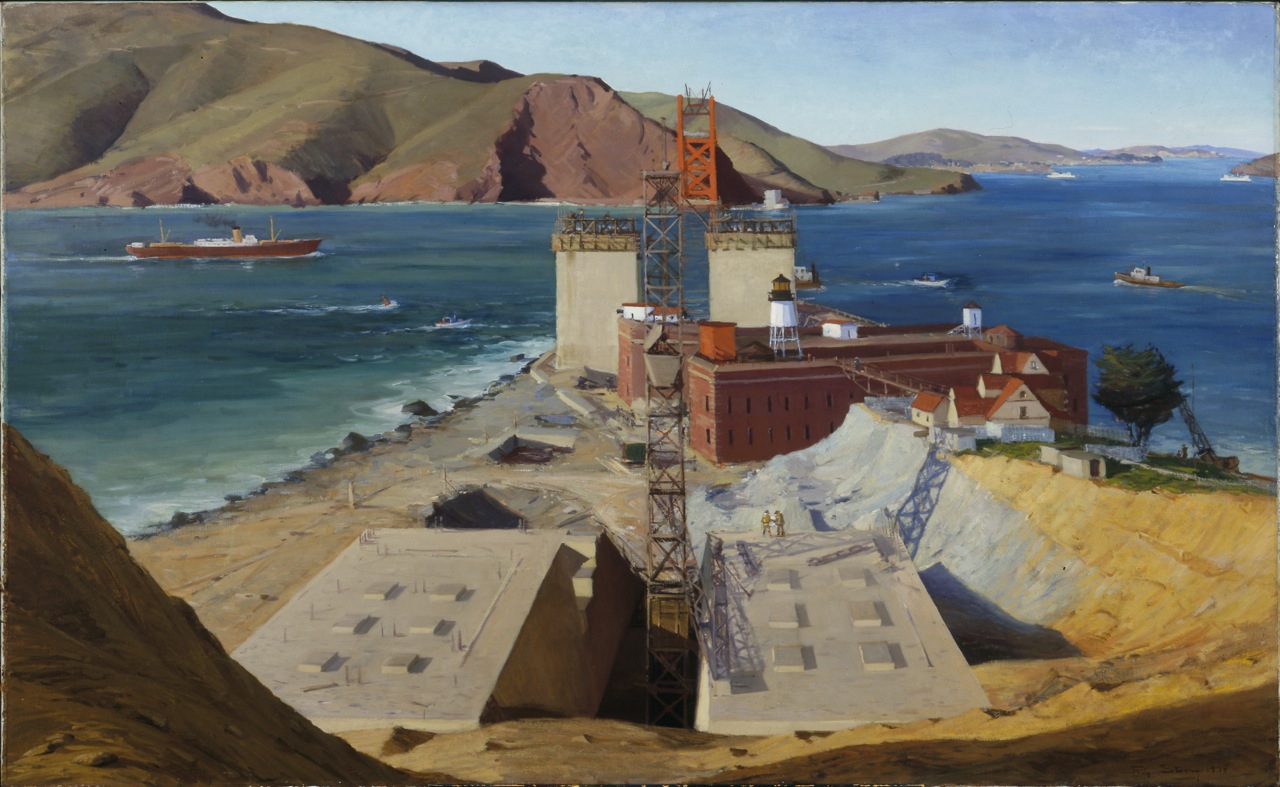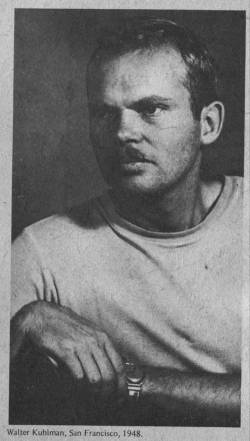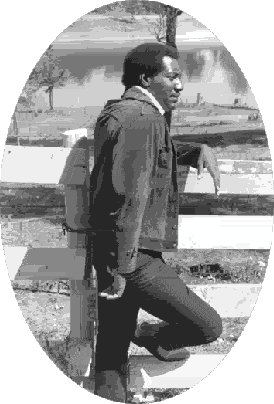The Day the Bridge Flatlined
 Thursday, December 2, 2010 at 01:23AM
Thursday, December 2, 2010 at 01:23AM The Day the Bridge Flatlined
The following column is excerpted from Kevin Starr’s book, “Golden Gate, the Life and Times of America’s Greatest Bridge”:
On Sunday, May 24, 1987 . . . as part, of the fiftieth anniversary celebration of its opening, the Bridge was closed to automobile traffic, and pedestrians were encouraged to walk across the Bridge from either the San Francisco or Marin side in the early morning hours, to be followed later that morning by a parade of vintage cars: all this reminiscent of the two-day opening ceremonies of May 1937. As it was, some of the zaniness of the 1937 walk reccurred. A young woman in a Stanford sweatshirt, for example, planned to somersault her way across the Bridge. Four young men walked across on stilts. One young man in leopard-print underpants, a San Franciscan most obviously, stood in contrast to more modestly garbed Marinites; others wore signs around their necks indicating they had walked the Bridge as youngsters in 1937.
The pedestrian walk was scheduled to begin at 6:30 A.M., but by 5:30 A.M., the crowds on either side of the Bridge, swollen to unmanageability, spontaneously passed the restraining barriers and began their walk, sweeping along with them the San Francisco and Marin County officials who were supposed to preside at mid-Bridge ceremonies, which were never held. At mid-Bridge the San Francisco and Marin phalanxes met. Instead of passing each other on either side of the roadway as planned, the two phalanxes ran into each other head-on and came to a standstill, and the crowds behind them were brought to a halt in an increasingly impacted environment. By certain later estimates, the gridlocked crowd numbered some 250,000 pedestrians, which translated to a weight of roughly 4,800 pounds per lineal foot, for a total estimated weight of 31 million pounds of humanity on the basis of 125 pounds per person. Fortunately, a lighter roadway installed the previous year had increased the capacity of the Bridge to 5,800 pounds per lineal foot over its previous 4,000-pound capacity. Thus the Bridge held, although it flattened out and lost its characteristic arch. Winds of thirty to thirty-five miles per hour, meanwhile, were producing a decided sway in the roadbed, unnerving the crowd.
It is virtually beyond comprehension to contemplate what might have occurred—possibly the greatest manmade accident in human history—had the Bridge not been strengthened the previous year. . . On the contrary, aside from one or two alcohol-fueled fistfights on the margins of the crowd, not at the center, people behaved beautifully, and a disaster was avoided.
With the exception of one confirmed heart attack and one slightly serious bicycle accident during the dispersion phase, there was next to no report of serious health crises that could have proven disastrous, given the inability of medics to penetrate the crowd. A total of twenty-two children were reported separated from their parents, fifteen of them recovered or accounted for by mid-day: a source of terrible stress for parents, most obviously, but no children were reported hurt during their separation ordeal. Midmorning the long-delayed parade of vintage cars began, led off by the same 1937 burgundy Cadillac convertible that had carried San Francisco mayor Angelo Rossi and California governor Frank Merriam across the Bridge fifty years earlier, now conveying San Francisco mayor Dianne Feinstein and her husband Richard Blum. . .
Thus was the urban pedestrianism of the Golden Gate Bridge brought to unexpected extremes. No one—neither the District directors nor the staff of the Bridge, the Friends of the Golden Gate Bridge sponsoring the event, or for that matter the California Highway Patrol or the sheriffs of Marin and San Francisco counties—had come close to forecasting the size of the crowd that would show up for the commemorative ceremonies. In a sense, the size of the crowd came as an unwelcome surprise, as did the million-dollar debt incurred by the District for cleanup overtime and related expenses. Yet the overwhelming turnout, for all the problems it created, testified to the popularity of the Bridge as civic icon and pedestrian destination. Across one hectic, perilous, yet joyful morning, a million people celebrated their identification with a Bridge that conferred upon their metropolitan region its most compelling of urban achievement, its City Beautiful, shared and triumphant.
Just in time for holiday gifting, Mr. Starr’s book is now available for purchase at the Ice House (780 Bridgeway) and at the Historical Society rooms in City Hall. You can also select from a line of Phil Frank greeting cards and – exclusively at the Ice House --history-related Christmas cards, the 2010 Arts Festival poster, and a new line of note cards featuring photographs of Sausalito and particularly appealing shots of harbor seals and sea lions off our waterfront.

Ray Strong’s famous 1934 painting of the Bridge under construction is reproduced in full color in Kevin Starr’s book.
Photo from Smithsonian American Art Museum, courtesy of Bloomsbury Press.


